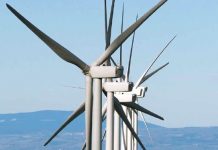I convinced myself that it was the deal of the century. Everybody could use a second car for those unforseen circumstances, right?
It wasn’t much to look at, but I was certain it would serve its purpose well.
Only 13 years-old? No problem. Just over 180,000 miles? Who cares? For only $1,500, I couldn’t go wrong.
As it turned out, buying that little gem was the best impulse purchase I’ve ever made.
Several years passed, and after selling my economically and environmentally unfriendly 11-MPG truck, the “second” car became my primary mode of transportation.
Renowned for its build quality and longevity, the boxy Swedish sedan carried me much further than I had ever anticipated. I pushed it past one mileage milestone after another.
At 225,000 miles, the odometer stopped working; the car didn’t. I kept rolling. By my estimate, the little “backup” jalopy eclipsed the quarter-million mile mark before finding its final resting place in a junkyard.
In the end, its list of ailments included a faulty anti-lock module, a gaping hole in its heater core, a recurring misfire, and only one functioning windshield wiper (thankfully, it was on the driver’s side).
I don’t remember thinking much about it at the time. After all, I had gotten my “money’s worth” out of it. I’d even joke occasionally—while it was still running—that my car was paying me.
Looking back, however, I wonder how much longer “White Lightning” (yes, I did name it; and yes, it was out of pure irony) would’ve lasted if I had made any effort to take care of it. My maintenance schedule for the car was non-existent. The oil may have been changed once a year.
White Lightning’s longevity was a testament to top-tier engineering and build quality; its demise was a testament to my apathy toward maintenance due to a minimal investment.
We don’t have that luxury in the wind energy industry.
With millions of dollars on the line, we can’t afford to “drive it ‘til the wheels (or in this case, rotors) fall off.”
This is certainly not earth-shattering news to the wind industry, but it doesn’t hurt to hear it every now and again. With an increasing number of turbines coming out of warranty, the emphasis on maintenance will also increase. We need to make sure we’re up for the task.
The main focus for our industry is sustainability. That means keeping wind assets running as long as possible—not just past the end-of-warranty period; not just to the expected equipment lifespan; not just to the end of a PPA.
Let’s continue to look beyond the generally accepted turbine lifespan, and instead see just how many miles we can clock on the ol’ odometer.
That’s why we place so much emphasis on maintenance here at Wind Systems. It’s a cornerstone of our magazine because it’s a cornerstone of our industry.
After all, nobody really wants to see billions of dollars worth of investment end up in an eerie wind turbine bone yard, do they?
Thanks for reading.


























